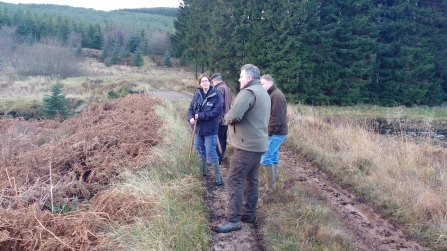
Restoring Ratty: Finding the right habitat for Ratty!

Restoring Ratty Project Officers Kelly and Graham were joined by Kevin O’Hara, one of the Trust’s Conservation Officers, along with the Head Wildlife Ranger from the Forestry Commission, Philip Spottiswood. Philip has lived and worked in Kielder for most of his life and remembers seeing Water Voles as a child and up to the eighties when American mink wiped them out.
We were looking for sites with good habitat nearby, fairly easy access for putting in pens and sites with good dispersal routes. The three key elements are water, banks for burrowing in and vegetation for food and cover. Water voles will use their burrows for safety from predators. They like to create their burrows in steep earth riverbanks and dig out their nesting chambers above the water level.
Vegetation is used for both food and cover. Sites with tall, herbaceous vegetation are ideal especially where there is marginal vegetation at the edge of streams, ditches or ponds for both easy access to food whilst sheltering from predators. Water voles will feed on stems, leaves and flowers of grasses, rushes, reeds and sedges as well as taken fruit and seeds where available. During winter when food may be scarce they will feed on roots, bulbs, and bark.
The sites we have chosen meet all of these criteria and will be suitable for water voles to be reintroduced into. We will look at these sites in detail over the coming months to find the best spots for the release pens. We are hoping that one site especially will give interested parties a good view of water voles.

